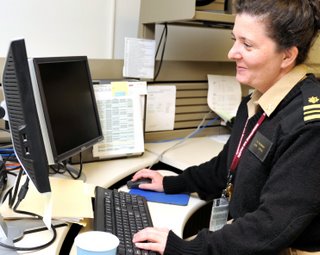Privacy Progress
As we predicted in our 2007 report, this year afforded the Department a “significant opportunity” to expand the presence of Privacy Officers and Privacy Points of Contact (PPOCs) within DHS components. We’ve added Privacy Officers in USCIS, ICE, and E-Verify to name a few components and programs. I am proud of our achievements during the last year, and there are a few more I would like to highlight.
The Office continues to grow to meet increasing responsibilities at the Department, doubling in size from Fiscal Year (FY) 2007 to FY08, increasing from 16 positions to 32, and from a budget of $4.55 million to one of $5.5 million. At the close of the reporting period, the Office was recruiting and hiring additional staff and continues to promote growth in component privacy programs as a critical means of addressing privacy requirements throughout the Department.
We are reviewing over 200 legacy agency Privacy Act Systems of Records Notices (SORN) and retiring or revising them, as necessary. This task supports Secretary Chertoff’s priority goal # 5: Strengthen and Unify DHS Operations and Management by utilizing the already established resources in the PPOC network, and communication with component Privacy Officers, program managers, and system owners to streamline and consolidate legacy SORNs. Additionally, this effort supports the Department’s objective to become "One-DHS" by using the resources of every DHS component to streamline processes and ensure that DHS complies with the Privacy Act. It is critical that the Department continues to uphold public trust in daily operations to secure the homeland while protecting the privacy the public’s personal information.
Additional activities undertaken by my office this year include
- New Congressional requirements to build the Department privacy processes
- Increased outreach and collaboration within the Department and with the intelligence community, federal, state, local, and international communities, Congress, and the public
- Increased responsibilities and authorities of the Chief Privacy Officer and the Department as defined by the Implementing Recommendations of the 9/11 Commission Act of 2007
- DHS Privacy Office support of the State and Local Fusion Centers
- Management of privacy complaints received by the Department
- The first year of implementing the Privacy Incident Handling Guidance (PIHG), and privacy incident management
- Expanded focus on technology to protect the homeland
- Expansion of required and optional privacy training, including targeted workshops and training as needed throughout the Department.
Hugo Teufel
Chief Privacy Officer
Labels: About the Department, privacy










